Mocke Downwind Camps in Fish Hoek, South Africa with Dawid and Jasper Mocke
If you have never done a downwind paddle in the open ocean, don’t do it. Cause if you do, you will get hooked and your life will never be the same again.
I can hardly imagine anything farthest from New England than Fish Hoek, South Africa. It’s about 24hr travel time or about three days of return travels. Quite crazy for a week of paddle, isn’t it? Why bother? Looking back, I think, going there was one of the best decisions I’ve made this year. Even after coming back and dwelling into my everyday life this trip is still giving me an inspiration to share this unbelievable experience and tell you about Mocke Downwind Camps.
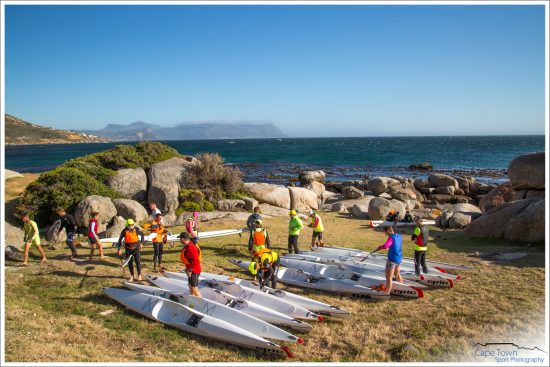
Getting Ready
First off, to set the stage a bit, my wife and I are a kind of beginners in paddling – it’s our second year in the sport (my K1 paddling as a teen doesn’t count after 25 years of retirement). Our paddling experience was limited by mostly flat water trainings along with weekend paddling in the ocean. As you know, ocean conditions here in New England are either chop, or wind-chop, or mostly often a bumpy washing machine, or flat. Did I mention downwind? So this is what we had, except for a few trips to Kauai, HI and Newport, CA.
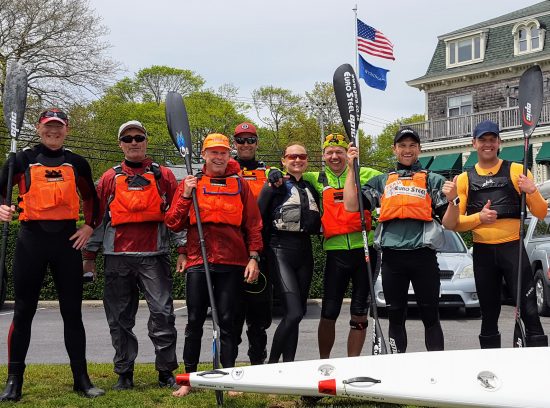
Olga(next to Max(green) taking their first Mocke Clinic with Jasper in Jamestown, RI, USA in May 2017 with part of the New England Paddlers.
Yet surfskis were made to surf the waves. Ocean gives lots of fun but surfing its swells gives even more. Can we learn it? Can we enhance our ocean paddling skills? Can we challenge ourselves and learn how to paddle in really big conditions? Can I learn from the best coaches and absorb their experience? What is the best place to learn? These questions were in my mind when I’ve found out about Downwind Camps and Millers Run and it took me a split of a second to make my mind. So by the end of paddling season in New England me and my significant other, (Olga) went to South Africa to face the best adventure with Mocke family.
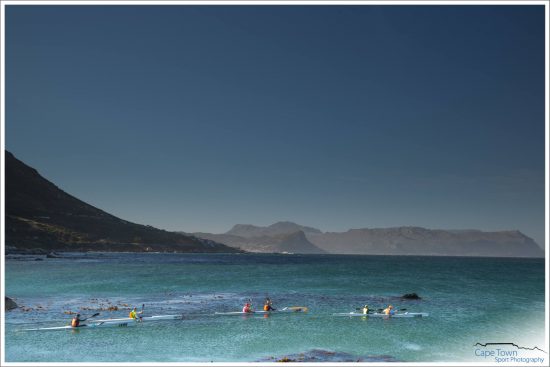
Setting off.
The Camp is very well arranged. Dawid’s finickiness is impressive and results in all sorts of checklists, surveys, schedules and other reassuring attributes of well organized event (and actually promotes confidence and safety – more on it later). By default you are placed into a small, comfortable and caring family villa with decent yard, great breakfast and facilities. It’s located about 10 min walk from the lifesaving club where the fun part starts.
First day is all about orientation. You get a ski (better upgrade to a stable one unless you started paddling downwind as early as you started walking), your gear is checked and then you paddle in the bay. It still might get messy in the bay because of the breaking waves and strong wind (up to 20-45 knots) but all remain very safe. You get a feeling of real swells, make three-five circles out and back, practice remounts and receive tons of instructions from Mocke team. They meanwhile look at you and assess your abilities. This will be used then to place you in a right group in order to watch over you while you are paddling Millers Run.
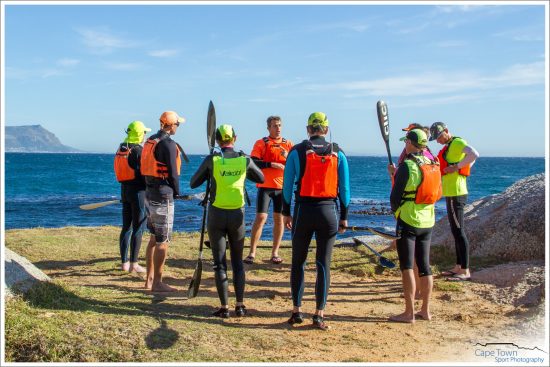
Dawid talking to group
Most of the days are all about paddling Millers Run downwind. You get up early, have a quick snack at villa (they serve it specifically for the paddling group), get to the meeting point by 6.50am to have your gear checked and then take off to a Millers point – this is where you start your downwind paddling. While driving Jasper and Dawid give a lot of observations on the conditions and required paddling technique to deal with them. You see the ocean, swells, white horses and listen to all the Mocke’s wisdom offloaded onto you with the today’s wind speed. Go try remember all of it.
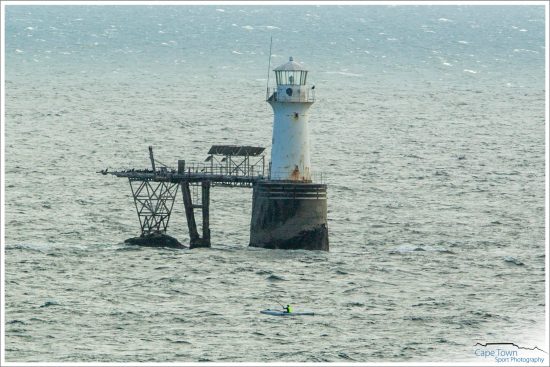
Look close for Olga
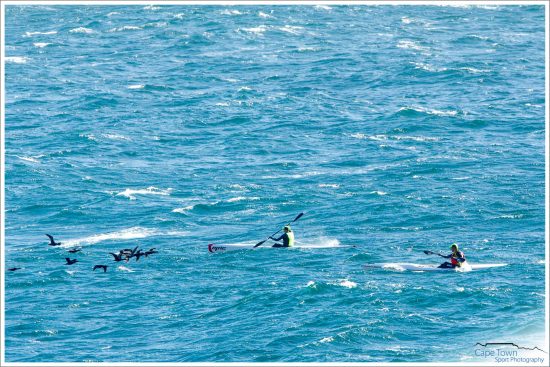
Max and Olga
You are lucky if during first days of paddling conditions are “calm”. Which is defined as wind being around 20 knots and swells ~7 feet. Then you can relax and learn. At starting point as soon as all boats are offloaded Dawid and Jasper run a briefing explaining conditions, goals for the training for each of the participants, go through their safety checklist and assign you to a heat (according to your downwind skills). Each heat is accompanied with one or often two Mocke team members (very experienced and passionate paddlers with knowledge how to oversee, coach and help you on the water if necessary).
More often your group starts at easier and safer slipway nicely protected from the waves. You paddle out for about 1k into the ocean in the waves and in the wind – just to align with the proper line to start the run, then turn your nose to the lighthouse, your first milestone, and… fun begins! You have 50-60 minutes of pure surf fun. The amount of fun you get is obviously directly proportional to your confidence and skill, which ultimately increase every single day during the Camp.
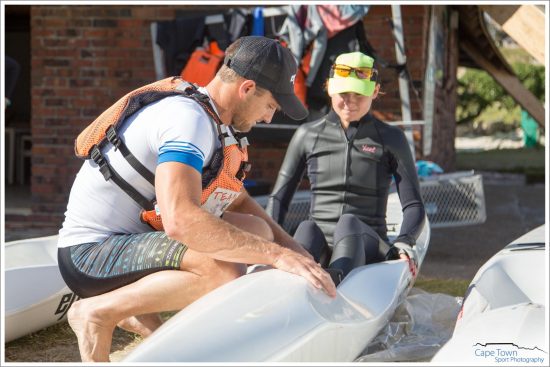
Jasper getting Olga set up.
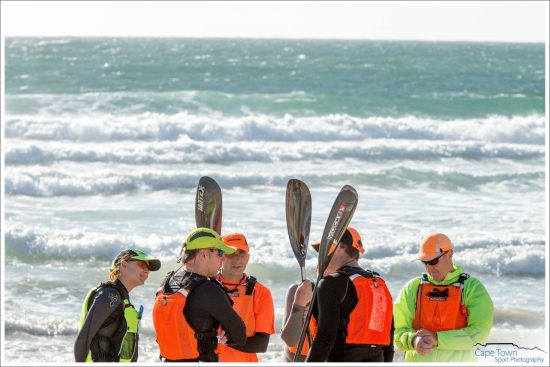
Instructions before launching, Olga and Max on left.
Even if you’re an experienced paddler there is a lot to learn. To see waves and understand the ocean. To burst your cadence at a heartbeat to catch a wave. To track the troughs with boat’s nose like a snake. To extend your vision beyond your boat to see the ocean’s pattern forming around you. To learn how to slow down and paddle easier while waiting for the waves to come from behind you. To connect runs together – this is where the real Run begins.
One cannot say enough about stability. My typical self-confidence tricked me into taking Fenn Swordfish on my arrival (I paddle less stable boats at home). It turned out that even at 25-30knots I don’t feel stable enough to go for tougher runs. Thanks to Dawid for seeing that instantaneously and trading his Bluefin with me. Once I’ve got onto stable boat I could focus completely on refining technique of catching waves and connecting runs.
An important thing I’ve learned is that downwind is very hard and very easy paddle at the same time. Once you learn how to burst power, how to keep paddling until and after you catch a wave (which is quite hard especially for faster and bigger swells) then everything suddenly becomes much easier. Using smaller chop rides to gradually increase your speed, then with a burst power coming from dramatically increasing your cadence, you get onto a faster swell, connect it to the next swell – and then you fly.
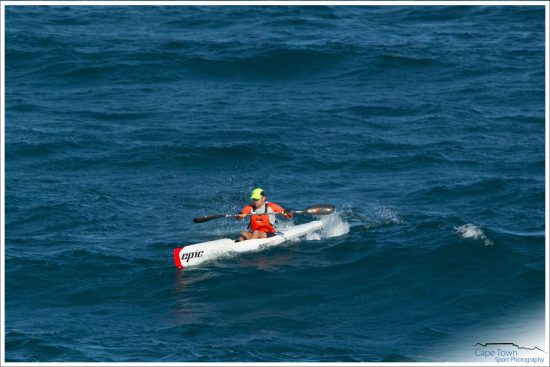
Max catching it.
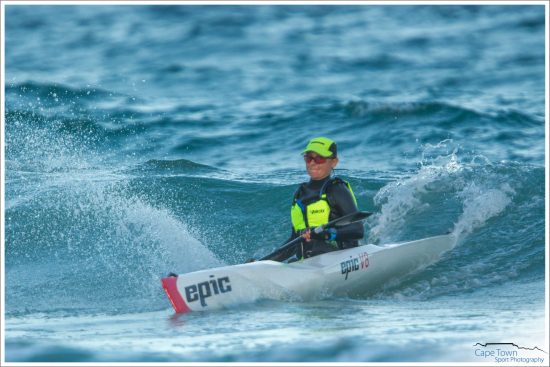
Olga bracing
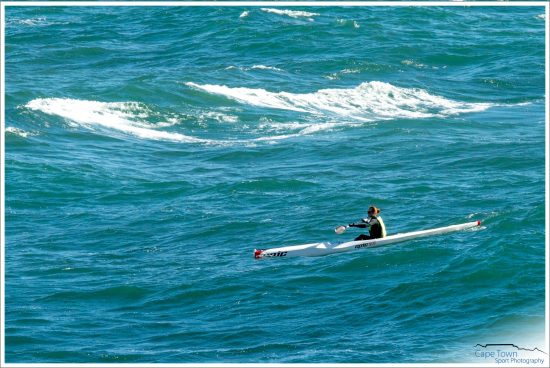
Olga headed in the right direction.
Every now and then Mocke would put us in the doubles with them. This is pure learning time. Following their thoughts, vision, cadence, power brings unbelievable insights. Dawid and Jasper are different in the way they approach the waves and this gives you truly 360 observation of what is possible. After every Millers Run you have a debrief. Lots of encouragement and tips from the crew. Lots of things to think about and try out during the next session. Now off to the savory breakfast. After that you have some free time till the next Miller’s Run at 4pm.
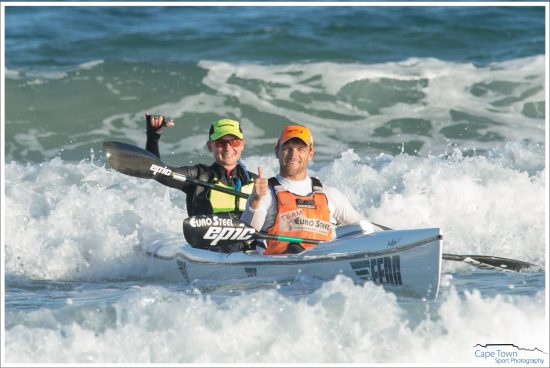
Olga and Jasper
If you think you’d be able to squeeze in sightseeing into your seven-hour break between paddles, think again. We were full of dreams. Long list of plans and routes. We thought that every day we could make somewhere in South Africa. Nope. Zip. Nothing. The best dream was to get a nap. Real, long, sweet nap.No, it’s not quite true. You need a nap, but also you are provided with opportunities to hike Table Mountain (led by Jasper who was lightning quick there), get around Cape of Good Hope or similar routes. Without going really far you can have a quick nap but also a very nice impression of the area.
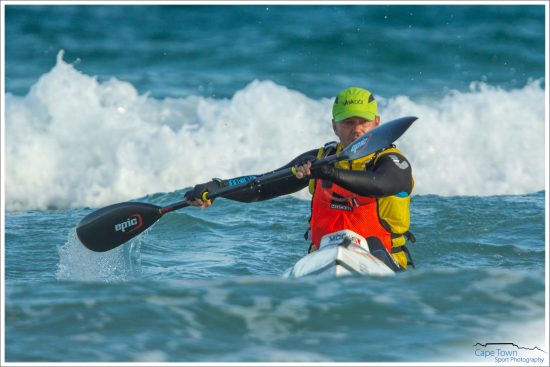
Max in good form
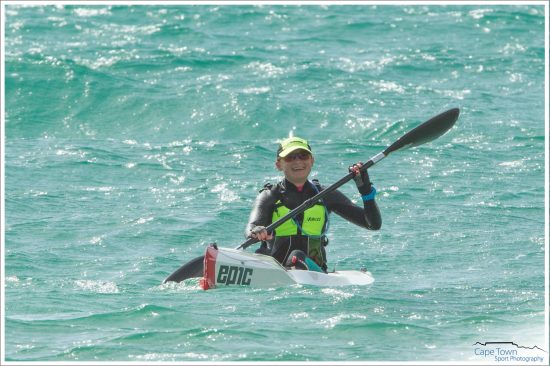
Olga smiling
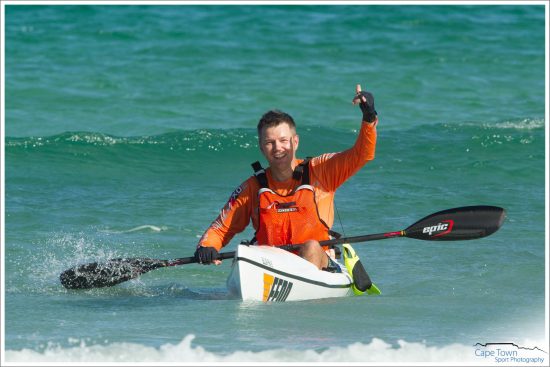
Max Smiling too!
Afternoon sessions begin at 4pm. Same drill, working on mistakes. Conditions could become much bigger, like 40-45 knots and 9+ feet swells. In most cases team will just take more stable boats and go. Wind is pulling the paddles off your hands and tries to turn over your boat. But who cares? You paddle and learn, what could be better then this? At finish you have starry-eyed folks with huge smiles – who knows if this is because they survived through the run, or enjoyed quickest surf, or both? After all this intensity you strive to fill in your evening with chill, food and joy – and you cannot find better company than your paddling mates. Choice of decent restaurants or braai (local version of barbecue) cooked by Dawid and Jasper, passionate paddlers sharing their memorable moments, laugh and jokes about own mistakes and learning – that’s your evening. You need to relax and get ready for the next day, because it’s a Camp and you came here to paddle and learn, learn and paddle.
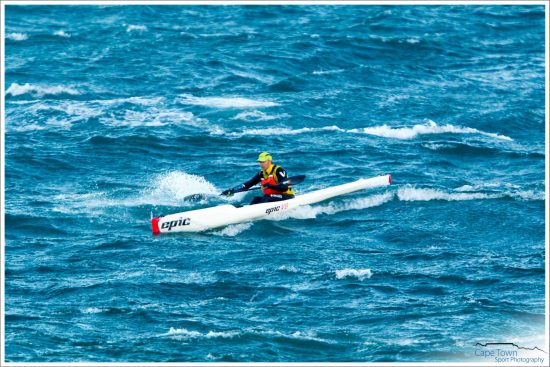
Max
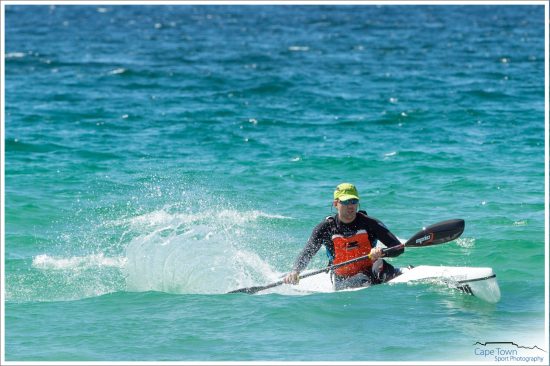
Max
Sometimes Mocke will throw in “pointers” training or surf sessions in the bay. Every training is about refining your technique and building confidence. Dawid and Jasper follow you closely and make sure you put everything you have in it. They command, follow, push and teach you. You absorb all of that in order to practice it during the next Millers Run, just to overcome your previous self, become a little bit better at surfing the waves.
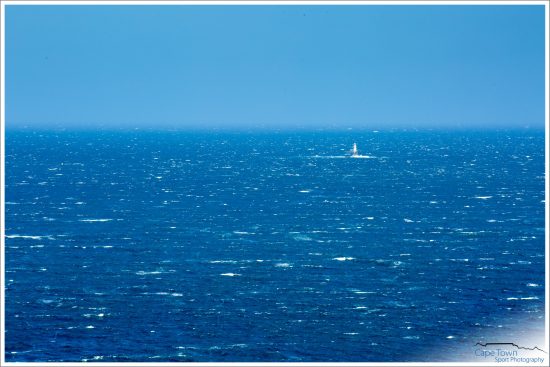
Lighthouse
Be warned, once you’ve got into paddling the Millers Run twice a day it’s hard to stop. You’ll be looking around to find a challenge of the same degree and missing that feeling of excitement at the start and amusement at the finish. You are going to miss your mates and coaches, those gales and swells. So eventually you’ll get back for more.
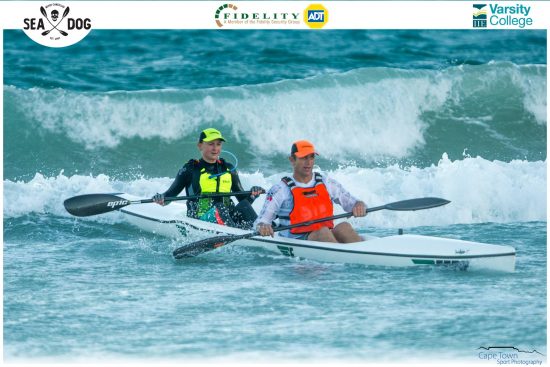
Olga and Dawid
See all the truly wonderful photos from the entire couple of weeks of the Mocke Camps, and the Sea Dog Race from the link below. You get a true feeling of what the surfski scene is like in Cape Town. Magnificent! All photos used are from Cape Town Sports Photography.
Cape Town Sports Photography
Max & Olga
December 11, 2017, Boston
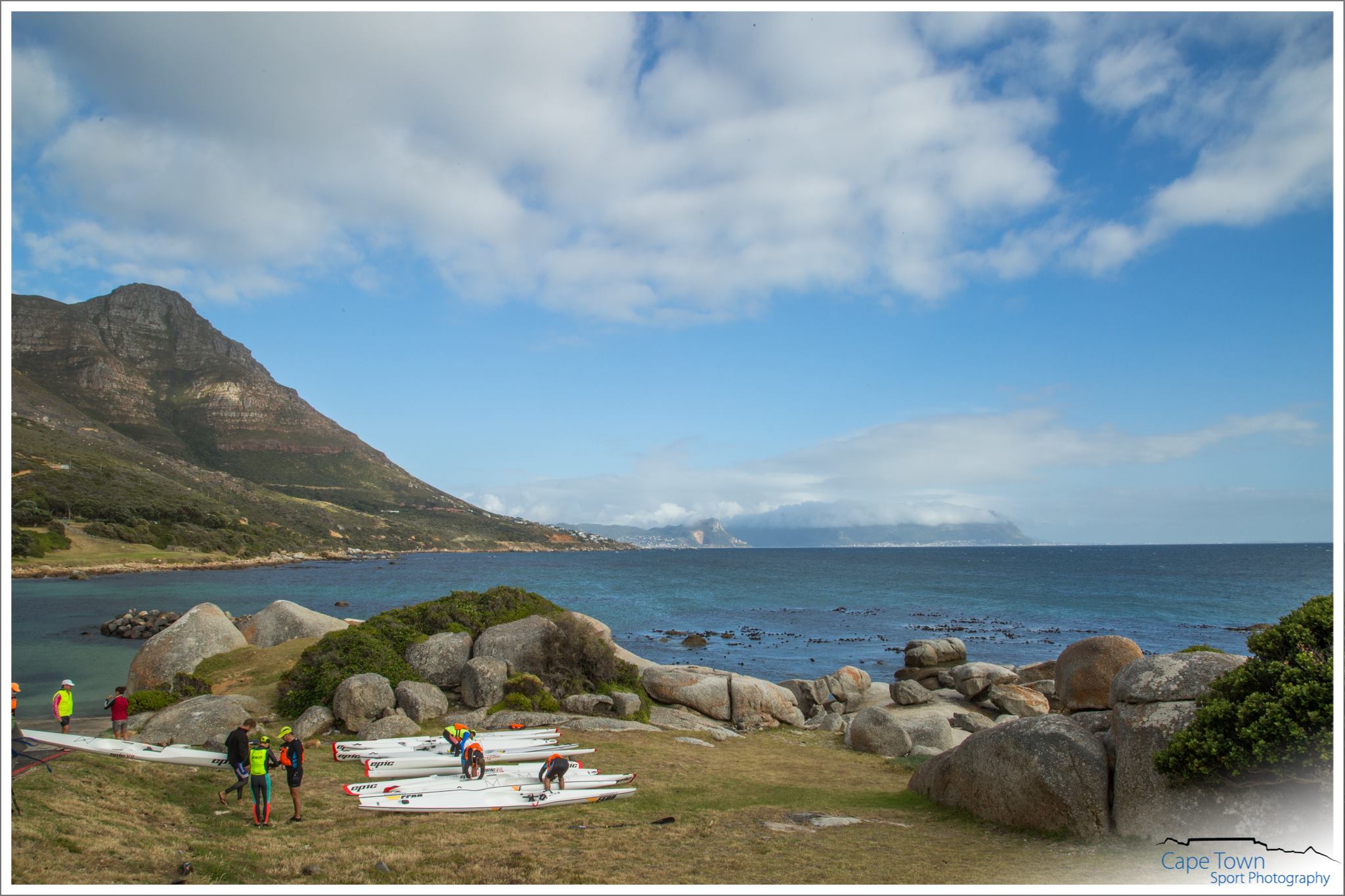
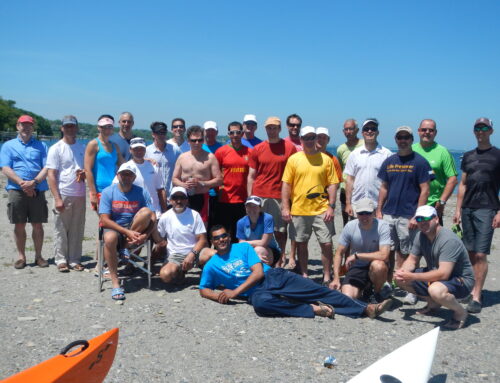
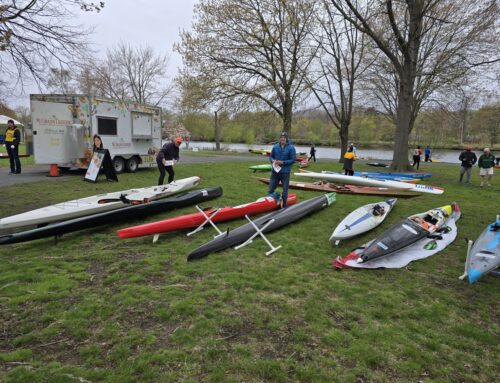
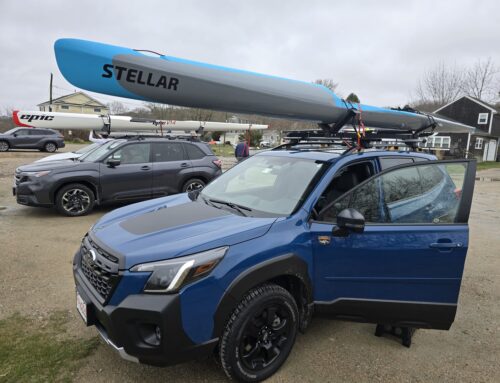
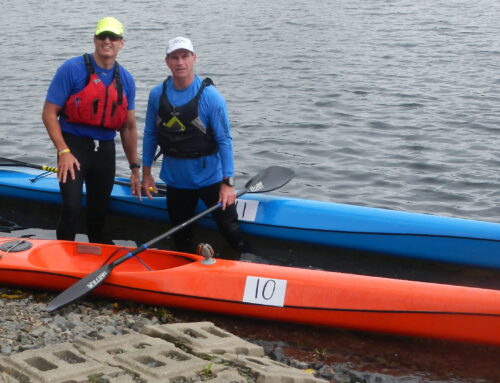
Leave A Comment
You must be logged in to post a comment.